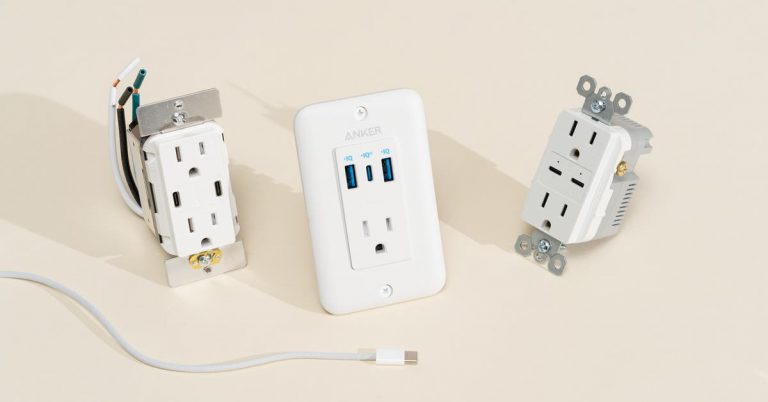The 4 Best Wireless and Wired Headsets of 2025
This is not a comprehensive list of all the headsets we’ve tested. We have removed models that have been discontinued or no longer meet our testing criteria.
Wireless headsets
The JLab Go Work and Epic Work were nearly as comfortable as our top pick but are bulkier and stick out farther from the head. Several testers said the earcups started to feel warm after just a few minutes of wearing them. And while their microphones delivered the most natural-sounding vocals of all the headsets we tested in 2025, voices coming through the earcups sounded too bright, with some higher-pitched voices sounding shrill.
The Logitech Wireless Zone 2 is an identical twin to the Zone 950 in appearance and features but performed significantly worse in noise reduction. As soon as any noise was introduced, the headset struggled, and the microphone started cutting out. Voices in particular started to have an echoey sound when fighting against background noise.
The Yealink WH64 is similar to the Poly Voyager Focus 2 in most respects, including its optional charging dock. Its standout feature is hybrid Bluetooth/DECT technology that extends the headset’s range and battery life. In Bluetooth mode, the WH64’s battery lasts for up to 26 hours of talk time (or 32 hours for the dual-ear model) and as much as 48 hours of listening, while in DECT mode it drops to about 14 to 16 hours of talk and listening.
We think the 25-hour battery life of our top pick is more than good enough for most people, and that headset beat the Yealink WH64 in sound quality, comfort, ease of use, and noise cancelation. Lastly, testers found the microphone on the WH64 was “dull-sounding, garbled, [and] hard to understand.”
The EPOS | Sennheiser Adapt 360 has a tight clamp, which is good for passive noise cancellation, but after half an hour it can feel like a vise on your head. We also heard some static when listening to music.
Our recordings on the EPOS | Sennheiser Adapt 660 exhibited a robotic tin-can sound, which we believe is the result of comb filtering (video).
The Jabra Evolve 65 has an unpadded headband, smaller earcups, a shorter battery life, and poorer voice quality in comparison with our current picks from Jabra.
The Jabra Evolve2 55 produced noticeable eardrum suck and had a short wireless range, and the control buttons were difficult to use.
Our previous pick, the Jabra Evolve2 65, didn’t perform as well as our current picks with their active noise cancellation and crystal-clear sound.
The Jabra Evolve2 75 did a terrible job of isolating our voice, and it often cut out during calls.
Producing middling voice quality, the Jabra Evolve2 85 couldn’t justify its $400 to $500 price tag.
We dismissed the Logitech Zone Vibe 100 for its poor voice quality, subpar pairing performance, and uncomfortable fit.
In our testing, the VXi BlueParrott S450-XT earned the lowest scores for outgoing audio quality, and it was also the bulkiest and heaviest headset we tested.
Wired headsets
The EPOS Impact 430 is a mono on-ear headset that’s very lightweight and fairly comfortable to use. Unfortunately, the audio from the mic is harsh to listen to. Testers said this headset had an “unnatural tonal balance.” It also cut out several times while we were recording audio samples.
The EPOS Impact 460T, a binaural on-ear headset, suffered from the same issues as the Impact 430. Testers could not figure out how to navigate the headset, and those with mild numbing in their hands said the buttons were hard to feel out or find. Lastly, the sound from the microphone was coarse and distorted according to several testers.
The EPOS Impact 860T ANC Dual-sided Wired Headset was praised by testers for doing a good job blocking out background noise, but was otherwise plagued by the same issues as the Impact 430 and 460T.
The EPOS | Sennheiser Adapt 165T is a decent headset: It’s lightweight and comfortable to wear, and our voices transmitted clearly. However, background noise came through louder with this headset than with our picks, and the build quality felt a little less premium.
Our previous picks from Jabra, the Jabra Evolve 40 and Jabra Evolve2 40, don’t offer background-noise cancellation or audio quality as good as that of our current picks.
Like their wireless siblings, the Logitech H390 fell out of contention for its staticky audio, volume issues, and uncomfortable design.
Bluetooth headsets
The Poly Voyager 5200 is a single-ear Bluetooth headset with fantastic noise cancellation, decent battery life, and comfortable fit. But the new Voyager Legend 50 outperformed the 5200 in all these aspects and uses a USB-C type charger instead of the outdated USB Micro-USB found on the 5200.
The in-ear Yealink BH71 Pro created painful pressure points when we moved the mic up and down, and its buttons were hard for testers with visibility or dexterity issues to find and navigate. Several testers found this headset hard to hear, sounding harsh and distorted, with a lot of room echo.
The Shokz OpenComm2 UC are bone-conduction headphones with a headband that goes behind the head instead of on top. We found them uncomfortable to wear for any length of time, and they didn’t fit several testers who tried it on. They also suffer from low volume output, and raising the volume makes them vibrate.
The BlueParrott M300-XT doesn’t sound as good or pair as easily as our current top pick.
The BlueParrott Point, the FimiTech Bluetooth Headset, and the New Bee Bluetooth Earpiece had poor noise cancellation and made our voices sound unpleasant.
The Jabra Perform 45 offered solid performance but lacked robust control features, such as voice activation.
This article was edited by Ben Keough and Erica Ogg.
Melanie Pinola, a Wirecutter senior staff writer, died in October 2024.






